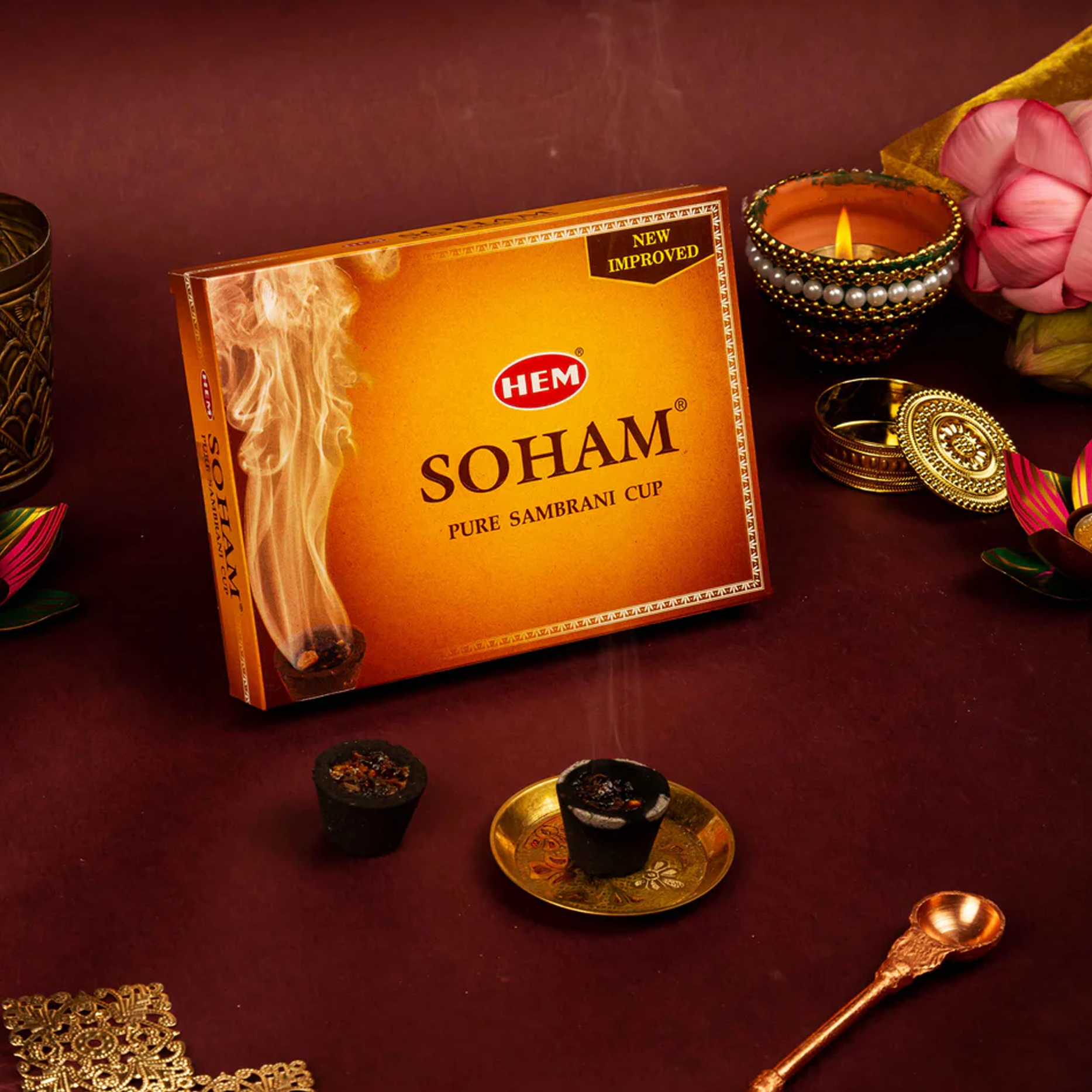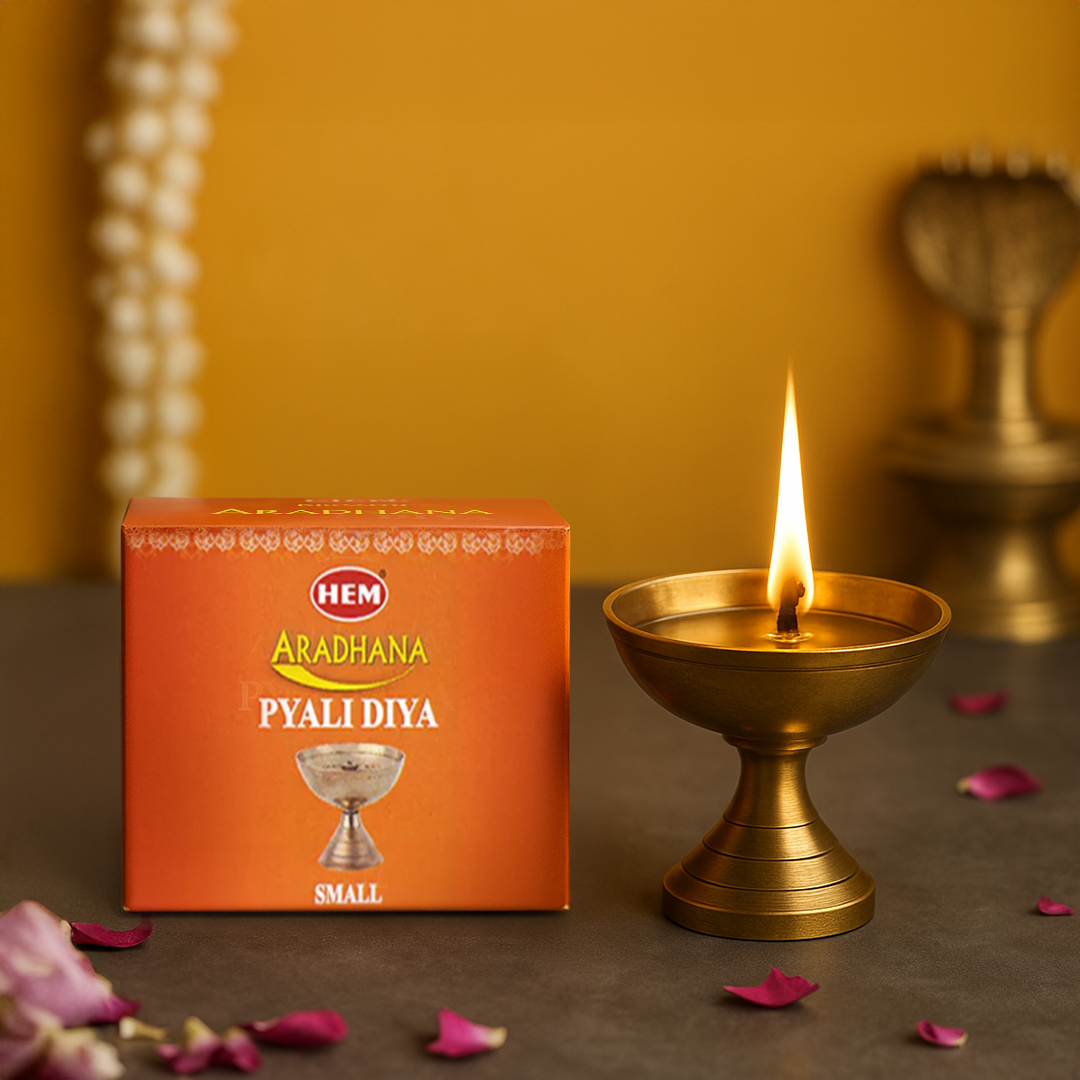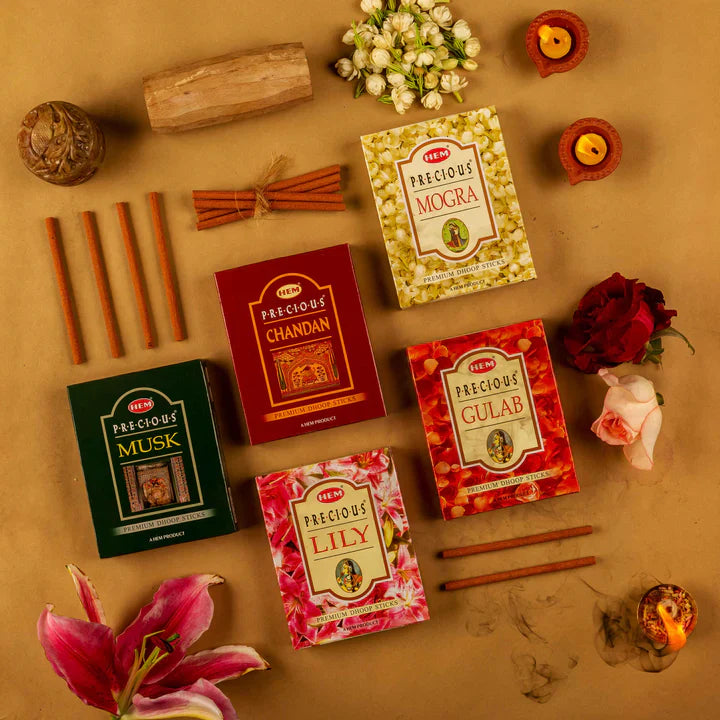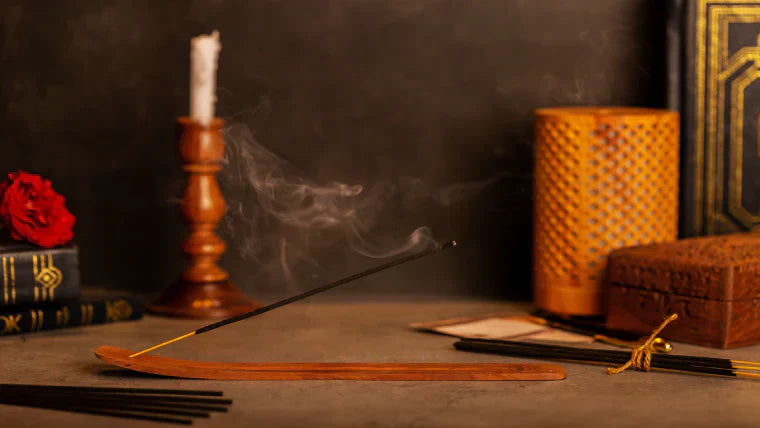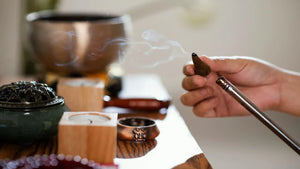Incense has been a part of human culture for thousands of years, acting as a bridge between the physical and spiritual worlds. Incense offers a unique sensory experience during rituals, meditation, or simply to provide a tranquil atmosphere. It comes in a variety of forms, such as- wood, cone, resin, and so on, with its own scent and identity. From uplifting spiritual practices to uplifting everyday moments, incense is a timeless tool to promote peace, mindfulness and connection to deeper energies.
What is Incense?
At its core, incense is a mix of aromatic materials that, when burned, release a pleasant fragrance. From ancient times, it has been a part of rituals and everyday life.
In ancient Egypt, for example, incense was used in religious ceremonies to honour their gods. The practice spread to other regions such as China and India, where incense became an integral part of spiritual practices, meditation and healing. In Japan, it was taken further, turning incense into an art form called "kodo", where the subtlety of fragrances was appreciated.
That deep cultural meaning remains today. Whether for spirituality, meditation, or simply creating calm, incense continues to be a powerful way to transform our space and uplift our spirits.
Different Types of Incense
Incense comes in various forms, broadly classified into direct-burning and indirect-burning types.
Direct Burning Incense
Incense Sticks
Incense sticks are probably the most recognisable form of incense. They consist of a thin bamboo stick coated with fragrant materials. When lit, the stick smoulders, releasing a continuous stream of aromatic smoke. Check out the premium collection of incense sticks & agarbatti options at HEM Fragrances for a refined incense experience.
- How to use: Light the tip of the stick until it catches fire, then blow out the flame to let it smoulder. Place it in an incense holder to catch the ash.
- How to store: Keep incense sticks in a cool, dry place, in an airtight container.

Check out the quality agarbatti options at HEM Fragrances for a refined incense experience.
Incense Cones / Dhoop Cones
Cones are quite similar to sticks but come in a cone shape. They are often made without a bamboo core, which means they burn more quickly but with a stronger scent. For a delightful range of incense cones, check out HEM Fragrances.
- How to use: Light the tip of the cone, let it catch fire, then blow out the flame. Place it on a heatproof surface or a dhoop holder.
- How to store: Store in a cool, dry place, away from direct sunlight.

Discover Dhoop Cones for a unique aromatic experience! Check out HEM Fragrances’ selection and elevate your surroundings with rich, enticing scents.
Backflow Cones
Backflow cones are designed to create a waterflow smoke effect when burned, as the smoke flows downwards through the burner. For a wide range of options, you can explore backflow cones and burners here.
- How to use: Light the tip of the cone, let the flame go out, then set it on a backflow burner. Enjoy watching the smoke cascade down, creating a visually pleasing effect.
- How to store: Store in a cool, dry place and handle with care to avoid crushing the cones.

Backflow Dhoop Cones & Burners transform any space with captivating smoke effects. Shop our extensive range and enhance your atmosphere now!
Incense Coils
These are spiral-shaped and burn for extended periods, making them a great choice for long meditation sessions or ceremonies.
- How to use: Light the outer tip of the coil, let it smoulder, and either hang it safely or place it on a heatproof surface.
- How to store: Keep in a cool, dry environment to preserve their shape and scent.
Smudges
Smudging involves burning bundles of dried herbs like sage or palo santo. This practice is often associated with cleansing and purifying spaces.
- How to use: Light the end of the smudge stick, allow it to smoulder, and gently wave it around the area you wish to cleanse.
- How to store: Store in a dry place, ideally wrapped in a cloth to prevent moisture from affecting the herbs.
Indirect Burning Incense
Resin
Resin incense is a form of hardened tree sap, mostly used in religious ceremonies for its rich aroma.
- How to use: Burn resin on a charcoal disc placed in a heatproof bowl. The resin will melt and release its fragrance as the charcoal heats up.
- How to store: Keep resin in a cool, dry place, in an airtight container to prevent it from becoming sticky.
Incense Powder
Powdered incense is a fine blend of aromatic materials that can be sprinkled on a heat source or used in traditional incense burners.
- How to use: Sprinkle a small amount on a charcoal disc or use it in an incense burner designed for powders.
- How to store: Store in a sealed container to keep the powder dry and free from moisture.
Wood Chips
Wood chips, like sandalwood or cedar, offer a more natural and earthy fragrance. They are often used in traditional ceremonies.
- How to use: Burn on a charcoal disc or place directly on a heat source to release the fragrance.
- How to store: Keep wood chips in a dry, cool area, in an airtight bag or container.
Granulated Incense
Granulated incense consists of small, resin-like pieces that are easy to sprinkle and burn.
- How to use: Use on a charcoal disc or sprinkle over a heat source to release the aroma.
- How to store: Like resin, granulated incense should be kept in an airtight container to prevent it from losing its potency.
Incense Paste
Incense paste is a softer form of incense made by mixing fragrant materials with water or other liquids to form a paste.
- How to use: Apply a small amount to a heat source or use in a specialised type of burner.
- How to store: Store in a cool, dry place, making sure the paste doesn't dry out.
Picking the Right Incense for Your Home
Consider the following factors before choosing incense for your place:
-
Scent Selection
Go with a relaxing scent. Whether you’re drawn to the soothing sweetness of jasmine, the earthiness of sandalwood, or the refreshing notes of lavender, your favourite scent can really set the mood.
-
Intended Use
Think about why you are burning incense. Is it to relax, meditate, or decorate your space? Different scents work well for different vibrations- for example lavender or sandalwood help deep meditation.
-
Organic ingredients
Stick to incense made with pure natural ingredients like pure oils and herbs. It means you can skip artificial fragrances and enjoy clean heat with all the calming benefits nature intended.
-
Burn Time
Consider how long you want the scent to last. For longer sessions, incense sticks or coils are great, while cones and powders are perfect when you need a quick burst of fragrance.
-
Responsible Sourcing
Choose ethically sourced fragrances and support companies that care about the planet and the people. It’s about making sure things are stored properly and employees are treated fairly.
-
Cost Consideration
While natural, high-quality incense might cost a bit more, it’s usually worth it for the better experience and peace of mind. Find that sweet spot between your budget and what feels right for you.
When is the Perfect Time to Burn Incense?
The right incense at the right time can transform your day.
Morning
Start your day with refreshing scents like citrus, ginger and cinnamon. A quick burn while getting ready can set the tone for the day.
Afternoon
Need an afternoon break? Light some incense while meditating, reading, or taking a quick break. Scents like sandalwood or lavender help to keep you focused and relaxed.
Evening
End your day on a peaceful note with light jasmine or lavender, setting the stage for a good night's sleep.

